 Facebook
Facebook
 X
X
 Instagram
Instagram
 TikTok
TikTok
 Youtube
Youtube
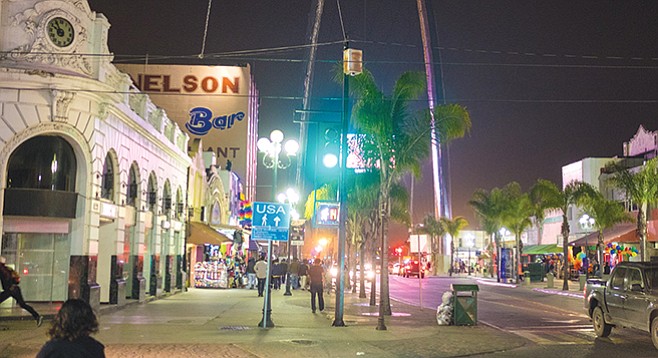
“It’s like a multicultural limbo,” said Ken Terry, a daily border crosser. “In Mexico, I’m the gringo. In America, I’m the white Mexican. I’m stuck in the middle and seem to be a foreigner in both places.”
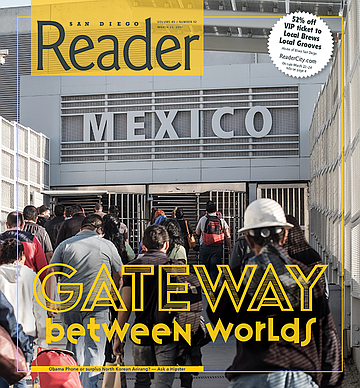
I met Terry during a Reddit meetup in Tijuana last summer. Most of the people at the meeting were speaking English. Terry was trying to speak Spanish, but his lack of fluency was obvious. Short and stocky, he wore the 2015 Mexican black soccer jersey. He has green squinty eyes, light-skinned, pudgy cheeks, big nose, and small mouth that grows three times larger when he smiles.
“American wages with a Mexican cost of living is baller,” continues Terry. “I personally enjoy the way of life and energy that living in Mexico provides; however, good-paying jobs in Tijuana are hard to come by.”

He commutes to work at a casino in San Diego on a regular basis. Originally from Arizona, Terry has been a regular border-crosser since he moved to Tijuana ten months ago. In the border-crossing world, that makes him a rookie.
“I understand [Customs and Border Protection] are just doing their jobs.” Terry crosses by car through the San Ysidro Ready Lane. “They have supervisors breathing down their necks, but most of them are pretty cool and understanding. However, every now and then I’ll come across a CBP who takes their job way too seriously. Those really need to take the stick out of their asses.”
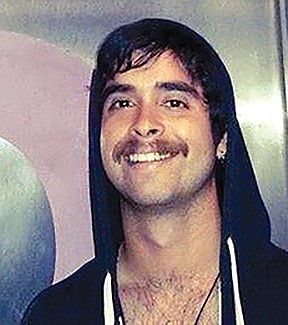
There are three lanes for vehicles entering the U.S. through San Ysidro Port of Entry: regular, Ready Lane, and SENTRI (medical lane excluded). To use the Ready Lane, a motorist must have a U.S. passport card or an enhanced driver’s license. The Secure Electronic Network for Travelers Rapid Inspection lane, better known as SENTRI, is for pre-approved travelers that hold a SENTRI or Global Entry card.
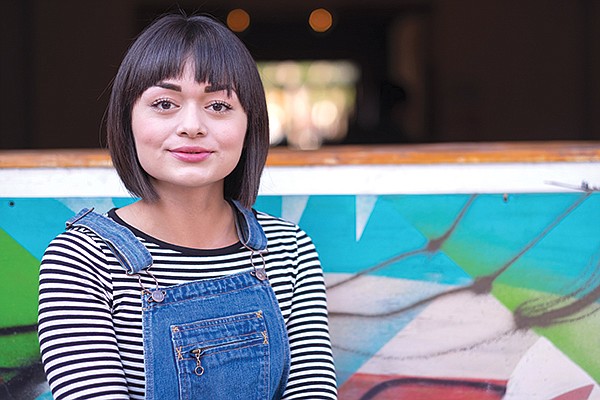
There are thousands of people in Tijuana that have a cross-border lifestyle similar to Terry’s. With approximately 350 million legal crossings annually, the U.S.-Mexico border is the most frequently crossed in the world; with over 40 million annual crossings, the Tijuana-San Diego region handles 11.4 percent of U.S.–Mexico crossing traffic.
On the north side of the border is the American dream, Southern California-style. On the south side, you have a city with poor planning and the optimism of a modern metropolis. A dark maze of a city full of mystery, smoke, brothels, bars, drugs, restaurants, bizarre art, loud music, tourist traps, and oddities.
With a population of 1.3 million, according to a 2013 census, San Diego is America’s eighth-largest city. Larger than San Diego, with an estimated population of 1.6 million, Tijuana is Mexico’s sixth-largest city. Following Detroit-Windsor, San Diego–Tijuana is the second-largest transborder agglomeration in the U.S.; it is the largest in Mexico and 19th largest metropolitan area in the Americas.
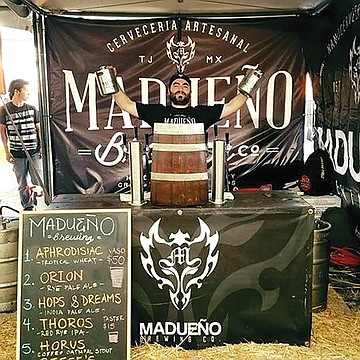
The San Ysidro border crossing is the busiest in the world. More than 50,000 northbound vehicles and 25,000 pedestrians are processed each day. It is an obsession of mine and of many others.
Tourists from both sides of the line only get a taste of the pain that is crossing the border. For the most part, the border line is composed of the same thousands of people who cross day in and day out.
“Where are you going? What were you doing in Mexico? Are you bringing anything?”
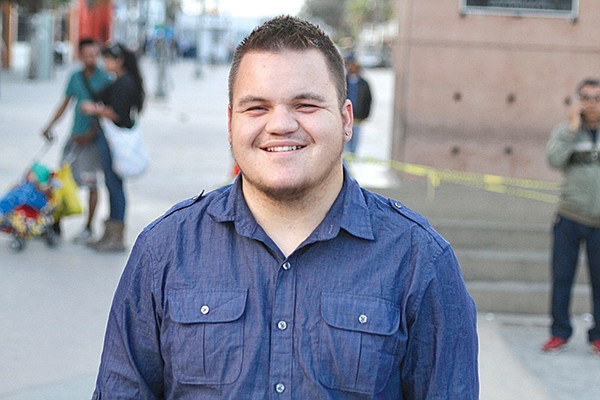
I have met hundreds of border crossers, just like Terry, who have to answer almost the same line of questioning hundreds of times per year. If you are lucky, those are the only three questions you have to answer. These are a few border crossers who I have met in my five years living in Tijuana. Participants chatted with me online about what it is like to live life on the border.
“I was ten years old when I first crossed,” writes 32-year-old Ciro Sepulveda, the promotions director for FM 94/9. “I’ve been crossing for 22 years. I used to do the daily drive, when I lived in Tijuana and worked in San Diego three years ago, but now I live in San Diego. I had SENTRI but it got stolen and I was unable to get a replacement, so now I cross through Otay. I’m mostly in San Diego, except for weekly visits to Tijuana for recreational soccer games on Tuesdays and occasional family visits on the weekends.”
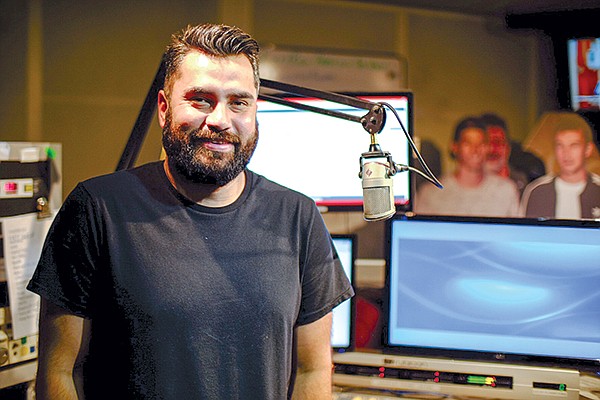
Sepulveda stands six-foot-three-inches. He’s broad-shouldered, handsome, and swarthy. His full black beard is starting to show a little white. When I met him over five years ago, he lived in Tijuana and crossed daily to work. But since his SENTRI was stolen and because he has been getting more responsibilities at his job, he spends most of his time in San Diego.
“It’s a very unique geographical area, for sure. We get the comfort and luxury of a first world versus the economical value of visiting TJ for the great food or nightlife. The border doesn’t have to move that slow. It’s up to the CBP agents. Some choose to be practical and quick, others… complete dicks.”
Sepulveda keeps goal on my brother’s amateur-league soccer team. They play every Tuesday night at a turf field called Fútbol CIX. The field is situated behind the Xolos soccer stadium in Hipodromo Agua Caliente. A 20-minute drive from the border, Hipodromo is one of Tijuana’s fanciest neighborhoods. Half of the team is composed of people who live in San Diego and cross to Tijuana just to play a 40-minute soccer match.
“I’ve been crossing since I was a baby,” writes 28-year-old Paola Valdivia, an activities assistant at an elder-care facility. “My earliest crossing memory is to go buy juguetes at Toys R Us. Now I work 40 hours a week from Monday to Friday, so I stay in San Diego and on my days off I go to Tijuana. When I was working 24 hours a week, on the weekends, I would cross from Tijuana to work and go back.”
I met Valdivia at a New Year’s Eve party at my neighbor’s apartment. She, along with her girlfriends, were wearing fancy fur coats and drinking champagne. She’s taller than most Mexican women, dark-skinned, and black haired, and has shiny dark eyes and a wide smile showing perfect white teeth. We talked about books, traveling, border crossing, and language mixing.
“I say I speak 50/50 when it comes to English and Spanish. There is a lot of staff and residents at my job that speak Spanish, so I use both daily; many times I have to be an interpreter between staff and residents. And of course, Spanglish is always present.”
David, my neighbor who had the New Year’s party, is a student at UCSD. He also crosses the border regularly. In fact, half of the tenants in my ten-unit apartment go back and forth between countries; the other half are not allowed to cross.
I have come to realize that neighbors in Tijuana like to keep to themselves. But after years of living in this building, I’ve learned a little about my border-crossing neighbors.
There is another David in the building, a big friendly man with ginormous feet. He was born on the East Coast and moved to San Diego at an early age. For six years, he has been crossing to work as a behavioral therapist for the San Diego Unified School District, though he prefers to call himself “a mentor.” He is a San Antonio Spurs fan and the basketball coach for the high school where he works.
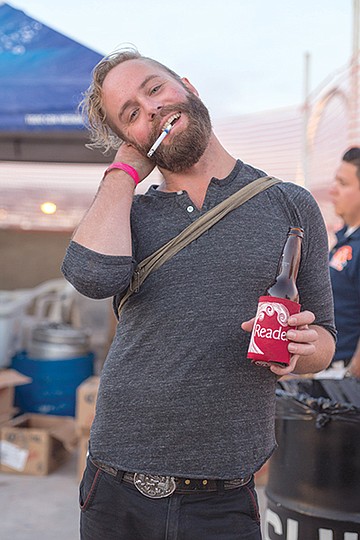
“My earliest memory is drinking beer at Plaza Viva Tijuana in high school, around 2002,” writes Chad Deal, a 32-year-old freelance writer who also contributes to the Reader. “For the past year or so, I have spent about 80 percent of my time in San Diego, the other 20 percent in Tijuana. I speak in a deeper voice and a different meter in Spanish. It’s mostly the result of emulation to get the accent right, but who wouldn’t talk like El Chente, given the opportunity?” [El Chente is Vicente Fernández, a famous Mexican ranchera singer and actor.]
Chad and I met around four years ago during a show at Moustache Bar in Tijuana Centro. My first impression was that he was the typical crazy gringo partying in Tijuana — blond, blue eyes, round belly, and a red nose and cheeks from drinking. Chad looked like a young Santa Claus partying in his youthful days. He used to spend more time in Tijuana, mostly drinking and working. But since he met his girlfriend, he spends most of his time in San Diego, drinks less, and has lost the belly. He only stays in the apartment for a few days a month now.
“I’ve been crossing frequently for four years,” continues Deal. “My main reasons to cross are the price of everything, vibrant culture, wild events, shrimp, (what up, Los Compadres?) and a sense of adventure. Border Patrol is mostly courteous but there are a handful of severe small-man syndrome sufferers on the force, like anywhere.”

“[CBP] is inefficient and racist,” writes Carlos Quintero, a 36-year-old bicycle-store manager in Chula Vista and singer of the band Batwings. “I was eight years old when I crossed through San Ysidro after visiting family in San Felipe and Ensenada. In 2001–2002, I crossed often through Tijuana, 2006–2008 in Mexicali, and 2015–2016 back in Tijuana. I spend 11–12 hours a day in San Diego, working, getting shit done, paying bills, and around 8–9 hours in Tijuana (including sleep). I speak either language about half and half. Around 65 percent of my customers speak Spanish.”
I met Quintero in May of 2014 at the first Tijuana Rumble Fest, a music festival in the middle of an abandoned factory that featured border-crossing bands. His eyes are usually bloodshot, he smiles a lot, and he calls everyone “mijo” — my son. He looks the part of a cross-border hardcore singer who loves cycling — tattoos, scruffy beard, a hat, wide-rim glasses, and a black shirt with a band logo.
“I had SENTRI for a year but had it taken away for smelling like mota” — marijuana, continues Quintero. “So now I cross through Ready Lane. My girlfriend and I really like TJ and wanted to do something different for a year. I would carpool with my girlfriend when she had school. Other days I rode my bike to work.”
“I hate CBP with all my heart, and I’ve been crossing regularly for more than ten years,” writes 26-year-old David Villegas, known as Danger Dave among his friends because of his wild lifestyle and nonchalant attitude toward authority figures that often puts him in risky situations. “I don’t remember the earliest time I crossed the border, but one of the latest I helped lift an old lady who was crossing through the disabled line.”
Why the crosser’s life for Villegas?
“I make five times the money working in San Diego as a cook than any job in Tijuana.”
Danger Dave and I became friends around four years ago. We met at a coffee shop that was situated a few blocks away from the border in Colonia Libertad. Doom to fail since its inception, the coffee shop was named after Diogenes the Cynic. Café Diógenes was infested with roaches and served stale coffee; but it had a library of used books for sale and a rare vinyl collection. Villegas and I bonded over similar tastes in music. For several years, he worked in stores at Plaza Las Americas outlet mall; now he makes a longer commute to downtown to work at the Old Spaghetti Factory.
He is a short Mexican punk kid with a spunky attitude. That attitude has gotten him in trouble dozens of times. A couple of years ago, he was stabbed in the streets of Tijuana and barely survived. He has calmed down in recent times and has cleaned up his act as well as his facial hair. He now looks like a little Freddie Mercury impersonator.
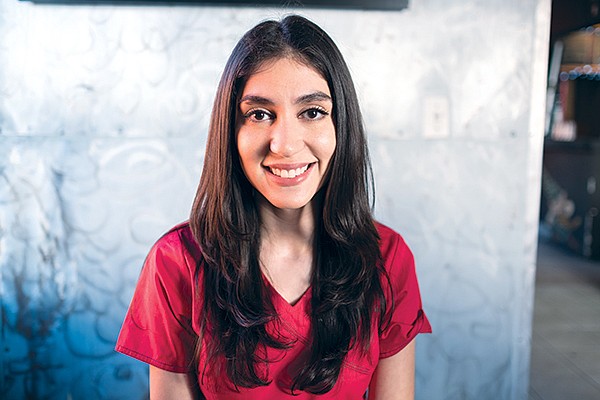
“I’ve been crossing the border for 23 years,” writes 29-year-old Kanthy Alejandra Frias. She is a registered dentist in Tijuana but only a dental assistant in San Diego. “I started crossing when I was six. I was living in San Diego and going to a private school in Tijuana. I was nine when my family moved south.”
“You need to floss and come in for a cleaning!” Frias is my dentist and she reminds me of that every single time I see her. She is a slender brunette with cartoony large eyes and thin lips that reveal a straight smile similar to the meme Good Girl Gina.
“CBP agents feel like they are superior,” says Frias. “I treat them like normal people. They cannot do anything to me if I’m not doing anything wrong; I learned that from my dad, who has been crossing to work for 33 years.”
One difference between the two cultures that sticks out to her? “People are colder, more self-controlled, and scared in the U.S., but more open to talk, which I find weird. I get more beauty compliments north of the border.”
“I had no idea the line got to the point of waiting three to four hours,” writes 26-year-old Natalie Rivas, manager at Buffalo Exchange store in Hillcrest. “I’ve been crossing frequently for six years. I remember when it was my first day at college; it was around summer when the border crossing is the heaviest. I grew impatient after waiting for around an hour and a half. I was pressed against time, so I decided to take the bus that they advertise as being faster than waiting in line. So I decided to go for it, thinking it would take, maximum, an hour to be all the way to the front. I paid and got on it. To my surprise, it was even slower. After an hour, the driver kept saying it would move at any minute. It didn’t move at all!”
Transport bus or van companies at the Mexican side of the San Ysidro border often claim that for $6 they’ll take you to the front of the pedestrian line, saving you several waiting hours. This often results in little to no time saved and a cramped ride inside a van. Sometimes it results in losing more time than necessary.
“I was mad and anxious not so much about the fact that I wasn’t going to make it to school that day, but that the driver kept lying,” continues Natalie. “So I just grabbed my things and got off the bus. I didn’t get my money back and I didn’t end up going to school that day either.”
Frias is a light-skinned small girl with tiny facial features and short black hair. I met her a couple of years ago briefly through a friend but we never talked until we kept seeing each other frequently crossing the border.
“I speak English all week,” continues Natalie. “I only speak Spanish on my weekends, which are the only days I don’t cross the border.”
Retail jobs near the border are common for young Mexican-Americans in Tijuana. Plaza Las Americas, on the north side, is the entry-level job for many border crossers.
“I have two nationalities and a half,” writes 23-year-old Yesenia Huerta a student and part-time retail worker. She’s Mexican-American and Japanese. “It’s been eight years of regular border crossing, and I speak more Spanish than English in either country. I cross through the regular PedWest gate, but I have many contacts that let me cut. Even when there is a long line, I never have to wait.”
Huerta’s facial features and high cheek bones make it easy to spot her at the border plaza. Always in good spirit and a coffee addict, her energy is different than the gloomy attitudes most everyone has while waiting at la pinche línea.
“CBP agents are very likeable, I have no complaints. Sometimes they buy me coffee. But sometimes they can be slow and rude with old people. I remember one time when an agent was making fun of an old lady. The lady flipped him off. It was really funny. I get treated the same in both countries, but sometimes I feel like Americans don’t get my dark sense of humor.”
“I speak Spanglish todo el día,” writes 20-year-old Christian Cárdenas. She is a student and fashion consultant who works in retail. “I’ve been crossing frequently for six years. It started because I got kicked out from many schools in Tijuana and none wanted to accept me anymore. So my mom sent me to school to el otro lado” — the other side. “With school and work, I spend 16 hours in San Diego and 8 hours in Tijuana. I never sleep!”
“I was around 8 years old when CBP made me cry,” writes 24-year-old retail worker Edgar Millan. “I remember they took me to secondary inspection and made me cry because they said I should be able to speak English if I was a citizen. Now, I’ve been crossing regularly for 11 years. I spend 14 hours in Tijuana and 10 in San Diego. I mostly speak Spanish.”
Cárdenas and Millan are a young couple of border crossers. Cárdenas, true to her nickname of Barbie, is a petite fair-skinned pretty girl always dressed to impress with full make-up. Millan is a big guy almost three times her size. Edgar crosses with a SENTRI card, Barbie suffers the wait in the regular line. The seemingly mismatched couple is easily distinguished from a distance holding hands crossing together back to Tijuana almost daily. I met them both while drinking beer at Norte Brewing Co., on Fourth between Consitución and Revolución in Tijuana Centro.

Carlos Macklis, the owner of Norte Brewing Co., is also a regular border crosser. The San Diego State graduate works as truck-shock designer at ProComp in Chula Vista. He is not the only brewer who crosses frequently.
“I think for everyone born in Tijuana, it’s a necessity,” writes 34-year-old Alfredo López, owner and brewer of Madueño Brewing Company in Tijuana. He works as a systems analyst in San Diego. “Now that I live in the U.S. with my family, and my business is in Tijuana, I cross even more. Most of the time, border agents are pretty laid back. Sometimes they are way too paranoid, but I can understand why. It’s a tough job, I can’t imagine the amount of drugs that pass through this border every day. Funny thing is, the rudest agents are always the ones that you can easily tell were not born in the U.S.”
López is fair-skinned with caterpillar eyebrows and a perpetual five o’clock shadow. Besides being a beer lover and brewer, he is one of the administrators of the popular border Facebook group “Como Esta La Línea.” He is also a family man with young twin sons.
“My earliest memory crossing is when I was six years old,” continues López. “But I’ve been crossing my whole life. San Diego and Tijuana keep getting bigger; at one point in the near future, they will need to open another border entry point. By the airport would be a good location.”
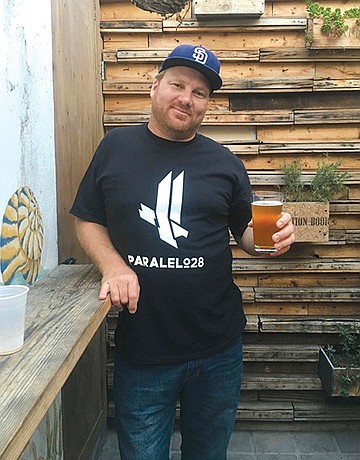
“My brother moved to Playas de Tijuana in 1998,” writes 40-year-old Joshua Nelson. “He married a girl from Colima in 2000 and brought her to Tijuana while they were waiting for her papers. He was only 19 years old. He would get up at 4:30 every morning and drive to the border in his Toyota pickup truck while listening to La Poderosa 860 AM. Cacharpas Bill was the DJ and he would play puras rancheras de las rolas viejitas: Las Jilguerillas, Pedro Infante, Javier Solis. At 6:00 a.m. they play the himno nacional de Mexico.”
Joshua is as white as they come — tall, blue eyes, blond. He is usually wearing an SD hat and holding a beer — at least when I see him, mostly at breweries around Tijuana.
“Here I am at Misión San Ignacio [in Baja California Sur].” Joshua sent me a picture of himself in front of a church when he was but a wee lad. “Between me and my brother we have about 17 years of cross-border stories, but I have crossed all my life. My earliest memories are camping in San Felipe. Camping all over Baja in general.”
The Reader has also had a strong relationship with Tijuana since its inception. I was surprised to learn that Jim Holman, the owner of the paper, lived in Colonia Independencia in Tijuana for a short stint in the 1970s. Luis Urrea, an award-winning poet, essayist, novelist, and hailed as a “literary badass” by National Public Radio, wrote about Tijuana for the Reader in the 1990s.
“I met a woman in Tijuana,” writes 30-year-old Matthew Dodd, who works in marketing in the Reader. “I’ve was crossing for around three years. Before working for the Reader I worked all the way in Carlsbad and didn’t have a SENTRI card. I got lost in Tijuana almost every time without my phone or GPS working.
“The cultures are so different. One example, typically if you go into a coffee shop in Tijuana, it’s totally normal to say hello/goodbye to everyone inside, not just the barista. I don’t think that happens too often here in the States. Overall, I felt so lucky to have the best of both worlds. I’d try to practice my Spanish in Tijuana, but people would mostly respond to me in English since they thought I was just another güero that didn’t know any Spanish. Or maybe they were just trying to practice their English! Who knows?”
Dodd says his family is from Argentina, but nothing about his looks says Latino. He has short blond hair, wears wide rim glasses, and exudes a friendly demeanor. He looks like someone you can trust to fix the office printer.
“Well, I just moved to South Park a month ago,” continues Dodd. “But when I was crossing daily and waiting in line, I got to catch up on music, audiobooks, phone calls, and emails. You also get to see some interesting people and sometimes road rage. When there was a long line, and I was in a rush to get to work, sometimes it made me feel like I was trapped in my own city.”
Asked about border agents, he says, “Only two CBP officers out of the hundreds were total dicks. I almost called CBP to file a report on this asshole at the San Ysidro border. His last name was Carrera.”
As for myself, I have been a border crosser my whole life, but my border-hopping experience differs vastly from the usual tijuanense skedaddle.
My upbringing was in Querétaro, Mexico, with an American mom and a Mexican dad. We would visit my mom’s family in Houston, Texas, once every two years or so. My last year of high school was in Woodhaven, Michigan, and my four years of college I spent at Saint John’s University in Minnesota. I crossed the border via airplane from central Mexico to the Midwest a couple of times a year.
This type of border-crossing experience is a common and similar experience to anyone who has flown internationally. The feeling of traveling thousands of miles and landing in a different country, climate, and culture is palpable with all your senses. Imagine that feeling every day, without traveling thousands of miles. Just a hop, skip, and a jump away from two complementary, unique, interconnected and interdependent worlds. A yin and yang of sister cities.
I remember the overwhelming sensation I felt the first time I walked from San Diego into Tijuana in 2010. A chiral entrance to a skewed world that somehow felt familiar. Though I have been crossing often for more than five years, I always feel strange about it. Like Alice going through the looking glass.
I have views of the border from my balcony, and now I cross with a SENTRI card. I go back and forth between worlds in a matter of minutes. I’m a dual citizen, with a dual life. The border-crosser life.


“It’s like a multicultural limbo,” said Ken Terry, a daily border crosser. “In Mexico, I’m the gringo. In America, I’m the white Mexican. I’m stuck in the middle and seem to be a foreigner in both places.”

I met Terry during a Reddit meetup in Tijuana last summer. Most of the people at the meeting were speaking English. Terry was trying to speak Spanish, but his lack of fluency was obvious. Short and stocky, he wore the 2015 Mexican black soccer jersey. He has green squinty eyes, light-skinned, pudgy cheeks, big nose, and small mouth that grows three times larger when he smiles.
“American wages with a Mexican cost of living is baller,” continues Terry. “I personally enjoy the way of life and energy that living in Mexico provides; however, good-paying jobs in Tijuana are hard to come by.”

He commutes to work at a casino in San Diego on a regular basis. Originally from Arizona, Terry has been a regular border-crosser since he moved to Tijuana ten months ago. In the border-crossing world, that makes him a rookie.
“I understand [Customs and Border Protection] are just doing their jobs.” Terry crosses by car through the San Ysidro Ready Lane. “They have supervisors breathing down their necks, but most of them are pretty cool and understanding. However, every now and then I’ll come across a CBP who takes their job way too seriously. Those really need to take the stick out of their asses.”

There are three lanes for vehicles entering the U.S. through San Ysidro Port of Entry: regular, Ready Lane, and SENTRI (medical lane excluded). To use the Ready Lane, a motorist must have a U.S. passport card or an enhanced driver’s license. The Secure Electronic Network for Travelers Rapid Inspection lane, better known as SENTRI, is for pre-approved travelers that hold a SENTRI or Global Entry card.

There are thousands of people in Tijuana that have a cross-border lifestyle similar to Terry’s. With approximately 350 million legal crossings annually, the U.S.-Mexico border is the most frequently crossed in the world; with over 40 million annual crossings, the Tijuana-San Diego region handles 11.4 percent of U.S.–Mexico crossing traffic.
On the north side of the border is the American dream, Southern California-style. On the south side, you have a city with poor planning and the optimism of a modern metropolis. A dark maze of a city full of mystery, smoke, brothels, bars, drugs, restaurants, bizarre art, loud music, tourist traps, and oddities.
With a population of 1.3 million, according to a 2013 census, San Diego is America’s eighth-largest city. Larger than San Diego, with an estimated population of 1.6 million, Tijuana is Mexico’s sixth-largest city. Following Detroit-Windsor, San Diego–Tijuana is the second-largest transborder agglomeration in the U.S.; it is the largest in Mexico and 19th largest metropolitan area in the Americas.

The San Ysidro border crossing is the busiest in the world. More than 50,000 northbound vehicles and 25,000 pedestrians are processed each day. It is an obsession of mine and of many others.
Tourists from both sides of the line only get a taste of the pain that is crossing the border. For the most part, the border line is composed of the same thousands of people who cross day in and day out.
“Where are you going? What were you doing in Mexico? Are you bringing anything?”

I have met hundreds of border crossers, just like Terry, who have to answer almost the same line of questioning hundreds of times per year. If you are lucky, those are the only three questions you have to answer. These are a few border crossers who I have met in my five years living in Tijuana. Participants chatted with me online about what it is like to live life on the border.
“I was ten years old when I first crossed,” writes 32-year-old Ciro Sepulveda, the promotions director for FM 94/9. “I’ve been crossing for 22 years. I used to do the daily drive, when I lived in Tijuana and worked in San Diego three years ago, but now I live in San Diego. I had SENTRI but it got stolen and I was unable to get a replacement, so now I cross through Otay. I’m mostly in San Diego, except for weekly visits to Tijuana for recreational soccer games on Tuesdays and occasional family visits on the weekends.”

Sepulveda stands six-foot-three-inches. He’s broad-shouldered, handsome, and swarthy. His full black beard is starting to show a little white. When I met him over five years ago, he lived in Tijuana and crossed daily to work. But since his SENTRI was stolen and because he has been getting more responsibilities at his job, he spends most of his time in San Diego.
“It’s a very unique geographical area, for sure. We get the comfort and luxury of a first world versus the economical value of visiting TJ for the great food or nightlife. The border doesn’t have to move that slow. It’s up to the CBP agents. Some choose to be practical and quick, others… complete dicks.”
Sepulveda keeps goal on my brother’s amateur-league soccer team. They play every Tuesday night at a turf field called Fútbol CIX. The field is situated behind the Xolos soccer stadium in Hipodromo Agua Caliente. A 20-minute drive from the border, Hipodromo is one of Tijuana’s fanciest neighborhoods. Half of the team is composed of people who live in San Diego and cross to Tijuana just to play a 40-minute soccer match.
“I’ve been crossing since I was a baby,” writes 28-year-old Paola Valdivia, an activities assistant at an elder-care facility. “My earliest crossing memory is to go buy juguetes at Toys R Us. Now I work 40 hours a week from Monday to Friday, so I stay in San Diego and on my days off I go to Tijuana. When I was working 24 hours a week, on the weekends, I would cross from Tijuana to work and go back.”
I met Valdivia at a New Year’s Eve party at my neighbor’s apartment. She, along with her girlfriends, were wearing fancy fur coats and drinking champagne. She’s taller than most Mexican women, dark-skinned, and black haired, and has shiny dark eyes and a wide smile showing perfect white teeth. We talked about books, traveling, border crossing, and language mixing.
“I say I speak 50/50 when it comes to English and Spanish. There is a lot of staff and residents at my job that speak Spanish, so I use both daily; many times I have to be an interpreter between staff and residents. And of course, Spanglish is always present.”
David, my neighbor who had the New Year’s party, is a student at UCSD. He also crosses the border regularly. In fact, half of the tenants in my ten-unit apartment go back and forth between countries; the other half are not allowed to cross.
I have come to realize that neighbors in Tijuana like to keep to themselves. But after years of living in this building, I’ve learned a little about my border-crossing neighbors.
There is another David in the building, a big friendly man with ginormous feet. He was born on the East Coast and moved to San Diego at an early age. For six years, he has been crossing to work as a behavioral therapist for the San Diego Unified School District, though he prefers to call himself “a mentor.” He is a San Antonio Spurs fan and the basketball coach for the high school where he works.

“My earliest memory is drinking beer at Plaza Viva Tijuana in high school, around 2002,” writes Chad Deal, a 32-year-old freelance writer who also contributes to the Reader. “For the past year or so, I have spent about 80 percent of my time in San Diego, the other 20 percent in Tijuana. I speak in a deeper voice and a different meter in Spanish. It’s mostly the result of emulation to get the accent right, but who wouldn’t talk like El Chente, given the opportunity?” [El Chente is Vicente Fernández, a famous Mexican ranchera singer and actor.]
Chad and I met around four years ago during a show at Moustache Bar in Tijuana Centro. My first impression was that he was the typical crazy gringo partying in Tijuana — blond, blue eyes, round belly, and a red nose and cheeks from drinking. Chad looked like a young Santa Claus partying in his youthful days. He used to spend more time in Tijuana, mostly drinking and working. But since he met his girlfriend, he spends most of his time in San Diego, drinks less, and has lost the belly. He only stays in the apartment for a few days a month now.
“I’ve been crossing frequently for four years,” continues Deal. “My main reasons to cross are the price of everything, vibrant culture, wild events, shrimp, (what up, Los Compadres?) and a sense of adventure. Border Patrol is mostly courteous but there are a handful of severe small-man syndrome sufferers on the force, like anywhere.”

“[CBP] is inefficient and racist,” writes Carlos Quintero, a 36-year-old bicycle-store manager in Chula Vista and singer of the band Batwings. “I was eight years old when I crossed through San Ysidro after visiting family in San Felipe and Ensenada. In 2001–2002, I crossed often through Tijuana, 2006–2008 in Mexicali, and 2015–2016 back in Tijuana. I spend 11–12 hours a day in San Diego, working, getting shit done, paying bills, and around 8–9 hours in Tijuana (including sleep). I speak either language about half and half. Around 65 percent of my customers speak Spanish.”
I met Quintero in May of 2014 at the first Tijuana Rumble Fest, a music festival in the middle of an abandoned factory that featured border-crossing bands. His eyes are usually bloodshot, he smiles a lot, and he calls everyone “mijo” — my son. He looks the part of a cross-border hardcore singer who loves cycling — tattoos, scruffy beard, a hat, wide-rim glasses, and a black shirt with a band logo.
“I had SENTRI for a year but had it taken away for smelling like mota” — marijuana, continues Quintero. “So now I cross through Ready Lane. My girlfriend and I really like TJ and wanted to do something different for a year. I would carpool with my girlfriend when she had school. Other days I rode my bike to work.”
“I hate CBP with all my heart, and I’ve been crossing regularly for more than ten years,” writes 26-year-old David Villegas, known as Danger Dave among his friends because of his wild lifestyle and nonchalant attitude toward authority figures that often puts him in risky situations. “I don’t remember the earliest time I crossed the border, but one of the latest I helped lift an old lady who was crossing through the disabled line.”
Why the crosser’s life for Villegas?
“I make five times the money working in San Diego as a cook than any job in Tijuana.”
Danger Dave and I became friends around four years ago. We met at a coffee shop that was situated a few blocks away from the border in Colonia Libertad. Doom to fail since its inception, the coffee shop was named after Diogenes the Cynic. Café Diógenes was infested with roaches and served stale coffee; but it had a library of used books for sale and a rare vinyl collection. Villegas and I bonded over similar tastes in music. For several years, he worked in stores at Plaza Las Americas outlet mall; now he makes a longer commute to downtown to work at the Old Spaghetti Factory.
He is a short Mexican punk kid with a spunky attitude. That attitude has gotten him in trouble dozens of times. A couple of years ago, he was stabbed in the streets of Tijuana and barely survived. He has calmed down in recent times and has cleaned up his act as well as his facial hair. He now looks like a little Freddie Mercury impersonator.

“I’ve been crossing the border for 23 years,” writes 29-year-old Kanthy Alejandra Frias. She is a registered dentist in Tijuana but only a dental assistant in San Diego. “I started crossing when I was six. I was living in San Diego and going to a private school in Tijuana. I was nine when my family moved south.”
“You need to floss and come in for a cleaning!” Frias is my dentist and she reminds me of that every single time I see her. She is a slender brunette with cartoony large eyes and thin lips that reveal a straight smile similar to the meme Good Girl Gina.
“CBP agents feel like they are superior,” says Frias. “I treat them like normal people. They cannot do anything to me if I’m not doing anything wrong; I learned that from my dad, who has been crossing to work for 33 years.”
One difference between the two cultures that sticks out to her? “People are colder, more self-controlled, and scared in the U.S., but more open to talk, which I find weird. I get more beauty compliments north of the border.”
“I had no idea the line got to the point of waiting three to four hours,” writes 26-year-old Natalie Rivas, manager at Buffalo Exchange store in Hillcrest. “I’ve been crossing frequently for six years. I remember when it was my first day at college; it was around summer when the border crossing is the heaviest. I grew impatient after waiting for around an hour and a half. I was pressed against time, so I decided to take the bus that they advertise as being faster than waiting in line. So I decided to go for it, thinking it would take, maximum, an hour to be all the way to the front. I paid and got on it. To my surprise, it was even slower. After an hour, the driver kept saying it would move at any minute. It didn’t move at all!”
Transport bus or van companies at the Mexican side of the San Ysidro border often claim that for $6 they’ll take you to the front of the pedestrian line, saving you several waiting hours. This often results in little to no time saved and a cramped ride inside a van. Sometimes it results in losing more time than necessary.
“I was mad and anxious not so much about the fact that I wasn’t going to make it to school that day, but that the driver kept lying,” continues Natalie. “So I just grabbed my things and got off the bus. I didn’t get my money back and I didn’t end up going to school that day either.”
Frias is a light-skinned small girl with tiny facial features and short black hair. I met her a couple of years ago briefly through a friend but we never talked until we kept seeing each other frequently crossing the border.
“I speak English all week,” continues Natalie. “I only speak Spanish on my weekends, which are the only days I don’t cross the border.”
Retail jobs near the border are common for young Mexican-Americans in Tijuana. Plaza Las Americas, on the north side, is the entry-level job for many border crossers.
“I have two nationalities and a half,” writes 23-year-old Yesenia Huerta a student and part-time retail worker. She’s Mexican-American and Japanese. “It’s been eight years of regular border crossing, and I speak more Spanish than English in either country. I cross through the regular PedWest gate, but I have many contacts that let me cut. Even when there is a long line, I never have to wait.”
Huerta’s facial features and high cheek bones make it easy to spot her at the border plaza. Always in good spirit and a coffee addict, her energy is different than the gloomy attitudes most everyone has while waiting at la pinche línea.
“CBP agents are very likeable, I have no complaints. Sometimes they buy me coffee. But sometimes they can be slow and rude with old people. I remember one time when an agent was making fun of an old lady. The lady flipped him off. It was really funny. I get treated the same in both countries, but sometimes I feel like Americans don’t get my dark sense of humor.”
“I speak Spanglish todo el día,” writes 20-year-old Christian Cárdenas. She is a student and fashion consultant who works in retail. “I’ve been crossing frequently for six years. It started because I got kicked out from many schools in Tijuana and none wanted to accept me anymore. So my mom sent me to school to el otro lado” — the other side. “With school and work, I spend 16 hours in San Diego and 8 hours in Tijuana. I never sleep!”
“I was around 8 years old when CBP made me cry,” writes 24-year-old retail worker Edgar Millan. “I remember they took me to secondary inspection and made me cry because they said I should be able to speak English if I was a citizen. Now, I’ve been crossing regularly for 11 years. I spend 14 hours in Tijuana and 10 in San Diego. I mostly speak Spanish.”
Cárdenas and Millan are a young couple of border crossers. Cárdenas, true to her nickname of Barbie, is a petite fair-skinned pretty girl always dressed to impress with full make-up. Millan is a big guy almost three times her size. Edgar crosses with a SENTRI card, Barbie suffers the wait in the regular line. The seemingly mismatched couple is easily distinguished from a distance holding hands crossing together back to Tijuana almost daily. I met them both while drinking beer at Norte Brewing Co., on Fourth between Consitución and Revolución in Tijuana Centro.

Carlos Macklis, the owner of Norte Brewing Co., is also a regular border crosser. The San Diego State graduate works as truck-shock designer at ProComp in Chula Vista. He is not the only brewer who crosses frequently.
“I think for everyone born in Tijuana, it’s a necessity,” writes 34-year-old Alfredo López, owner and brewer of Madueño Brewing Company in Tijuana. He works as a systems analyst in San Diego. “Now that I live in the U.S. with my family, and my business is in Tijuana, I cross even more. Most of the time, border agents are pretty laid back. Sometimes they are way too paranoid, but I can understand why. It’s a tough job, I can’t imagine the amount of drugs that pass through this border every day. Funny thing is, the rudest agents are always the ones that you can easily tell were not born in the U.S.”
López is fair-skinned with caterpillar eyebrows and a perpetual five o’clock shadow. Besides being a beer lover and brewer, he is one of the administrators of the popular border Facebook group “Como Esta La Línea.” He is also a family man with young twin sons.
“My earliest memory crossing is when I was six years old,” continues López. “But I’ve been crossing my whole life. San Diego and Tijuana keep getting bigger; at one point in the near future, they will need to open another border entry point. By the airport would be a good location.”

“My brother moved to Playas de Tijuana in 1998,” writes 40-year-old Joshua Nelson. “He married a girl from Colima in 2000 and brought her to Tijuana while they were waiting for her papers. He was only 19 years old. He would get up at 4:30 every morning and drive to the border in his Toyota pickup truck while listening to La Poderosa 860 AM. Cacharpas Bill was the DJ and he would play puras rancheras de las rolas viejitas: Las Jilguerillas, Pedro Infante, Javier Solis. At 6:00 a.m. they play the himno nacional de Mexico.”
Joshua is as white as they come — tall, blue eyes, blond. He is usually wearing an SD hat and holding a beer — at least when I see him, mostly at breweries around Tijuana.
“Here I am at Misión San Ignacio [in Baja California Sur].” Joshua sent me a picture of himself in front of a church when he was but a wee lad. “Between me and my brother we have about 17 years of cross-border stories, but I have crossed all my life. My earliest memories are camping in San Felipe. Camping all over Baja in general.”
The Reader has also had a strong relationship with Tijuana since its inception. I was surprised to learn that Jim Holman, the owner of the paper, lived in Colonia Independencia in Tijuana for a short stint in the 1970s. Luis Urrea, an award-winning poet, essayist, novelist, and hailed as a “literary badass” by National Public Radio, wrote about Tijuana for the Reader in the 1990s.
“I met a woman in Tijuana,” writes 30-year-old Matthew Dodd, who works in marketing in the Reader. “I’ve was crossing for around three years. Before working for the Reader I worked all the way in Carlsbad and didn’t have a SENTRI card. I got lost in Tijuana almost every time without my phone or GPS working.
“The cultures are so different. One example, typically if you go into a coffee shop in Tijuana, it’s totally normal to say hello/goodbye to everyone inside, not just the barista. I don’t think that happens too often here in the States. Overall, I felt so lucky to have the best of both worlds. I’d try to practice my Spanish in Tijuana, but people would mostly respond to me in English since they thought I was just another güero that didn’t know any Spanish. Or maybe they were just trying to practice their English! Who knows?”
Dodd says his family is from Argentina, but nothing about his looks says Latino. He has short blond hair, wears wide rim glasses, and exudes a friendly demeanor. He looks like someone you can trust to fix the office printer.
“Well, I just moved to South Park a month ago,” continues Dodd. “But when I was crossing daily and waiting in line, I got to catch up on music, audiobooks, phone calls, and emails. You also get to see some interesting people and sometimes road rage. When there was a long line, and I was in a rush to get to work, sometimes it made me feel like I was trapped in my own city.”
Asked about border agents, he says, “Only two CBP officers out of the hundreds were total dicks. I almost called CBP to file a report on this asshole at the San Ysidro border. His last name was Carrera.”
As for myself, I have been a border crosser my whole life, but my border-hopping experience differs vastly from the usual tijuanense skedaddle.
My upbringing was in Querétaro, Mexico, with an American mom and a Mexican dad. We would visit my mom’s family in Houston, Texas, once every two years or so. My last year of high school was in Woodhaven, Michigan, and my four years of college I spent at Saint John’s University in Minnesota. I crossed the border via airplane from central Mexico to the Midwest a couple of times a year.
This type of border-crossing experience is a common and similar experience to anyone who has flown internationally. The feeling of traveling thousands of miles and landing in a different country, climate, and culture is palpable with all your senses. Imagine that feeling every day, without traveling thousands of miles. Just a hop, skip, and a jump away from two complementary, unique, interconnected and interdependent worlds. A yin and yang of sister cities.
I remember the overwhelming sensation I felt the first time I walked from San Diego into Tijuana in 2010. A chiral entrance to a skewed world that somehow felt familiar. Though I have been crossing often for more than five years, I always feel strange about it. Like Alice going through the looking glass.
I have views of the border from my balcony, and now I cross with a SENTRI card. I go back and forth between worlds in a matter of minutes. I’m a dual citizen, with a dual life. The border-crosser life.
Comments